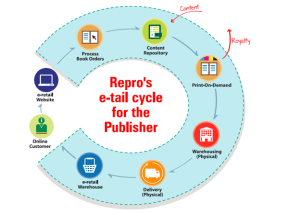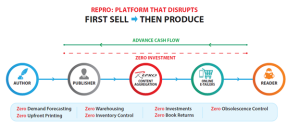I published this note to subscribers on 12th March, just the day before markets went haywire. I was feeling that Indian markets were not pricing in the Tail risks. That has changed since then. We are now seeing extreme volatility in the markets now.
————————
I wrote last week about the developing risks around the Corona virus epidemic. The main reason for raising cash was the concern I have around ‘Tail Risks’
What is a Tail Risk ? As per Wikipedia – Tail risk, sometimes called “fat tail risk,” is the financial risk of an asset or portfolio of assets moving more than 3 standard deviations from its current price, above the risk of a normal distribution. Prudent asset managers are typically cautious with tail risk involving losses which could damage or ruin portfolios, and not the beneficial tail risk of outsized gains.
The corona virus represents a tail risk in my mind. Even if we assume the health risk is low (I don’t know about that), the risk of an economic panic is quite high. I have been tracking the US markets and industries which are being hit due to this Epidemic. Industries in the travel and tourism space, have been hit hard. Travel and airline bookings have collapsed and places like Macau (casino in China) have reported an 87% drop in bookings.
The recent PMI (purchasing manager’s index) for China reported an all time low (lower than 2008). In effect economic activity is at a standstill in China (and now in Italy too). There are reports that it is re-starting, but it would take time as people are not going to forget about this event overnight and resume all the normal activities.
The bigger concern now is the spread of the virus in Europe and US (where it has been handled very poorly). US has been behind the curve and has yet to resume large scale testing. When that happens, the number of cases could increase, leading to slowdown in the economic activity. The US market is already starting to discount these concerns
Adding fuel to the fire
There could not have been a worse time for a large bank to Fail. Yes Bank which was on a life support, was finally taken over by the government (sort of). There is a moratorium on withdrawals by depositors as RBI works through resolving the situation. SBI is likely to invest around 2500 Crs for a 49% stake with the rest coming from other investors.
I have serious concerns about this event. In response I wrote the following on twitter
The true franchise value of a bank is on the liability side – aka trust of the depositor. The depositor is your true customer from whom you make money – Interest spread (NIM) and other income from selling financial products. Lose the depositor and value of a bank = 0
If you want to ‘save’ a bank, ensure that the depositors have 100% faith on the bank. No doubts, ifs, buts and maybe. Look at how FDIC in the US resolves troubled banks. It comes from the experience of bank failures in the 1930s during depression
The long-term risk with the way Yes bank has been rescued, is the loss of Trust of ‘depositors’ with the banking system. Giving aspirin to a patient with cardiac arrest does not help. As Yoda once said – Do or Do not, there is no Try
I am very concerned the way this Bail out has been in done. In the US, such bailouts are done by the FDIC swiftly, without the customer realizing that ownership has changed until much later. Typically, FDIC agents land up at a troubled bank on a Friday, take over the bank and change the management over the weekend. When the bank opens on Monday, there is no change for the end customer. For them, there are no restrictions on withdrawals and life goes on as usual. A few days later they are informed that the bank name or owner has changed which has zero impact on them.
The above approach which was developed during the 1930s depression to avoids panic and helps in resolving a failed bank without causing a run on it.
In the case of Yes bank, the restriction on withdrawals mean that customers will continue to withdraw till they have their entire money out. Put yourself in a customers’ shoe – why would you risk your life savings/ cash with a small upside and the risk (even if imagined) of losing it all.
Is this an IL&FS repeat
The unfortunate answer is yes and this time around the general public has been impacted. When IL&FS collapsed, the impact was felt by corporates, NBFCs and mutual funds (debt funds). The general public was not impacted to the same extent.
This time around the impact is being felt by a much wider segment of the population. I believe that the government will not let the bank fail (as they have stated) and depositors will not lose money. However, the trauma of seeing your money blocked for a period of time will be high. A bank depositor never signs up for this.
The timing for this event is very unfortunate. IL&FS happened when the global economy was moving along fine. We have a major event occurring globally and now the problem with Yes bank is sure to add to the risk aversion.
Expect volatility
I exited/ reduced our position in financials and avoided any further investments in financials in 2019. We are seeing a repeat of sept 2018 now in the form of price reaction. The difference is that our exposure to the financial services space is much lower and hence the impact for us is muted.
As it occurred in 2018, the impact of these events will be felt in the coming months and in surprising places . Our portfolio will be impacted by these events and I don’t think there is any place to hide (other than cash).
If you are not fully invested and plan to add based on the model portfolio, I would recommend staggering your purchases. In terms of the cash in the portfolio, I plan to add new positions in the coming weeks/ months. I am not in a hurry to do so. We will take our time and not try to pick the bottom of this market. The key will be to invest in companies which can survive the tough environment and thrive when the tide turns.




